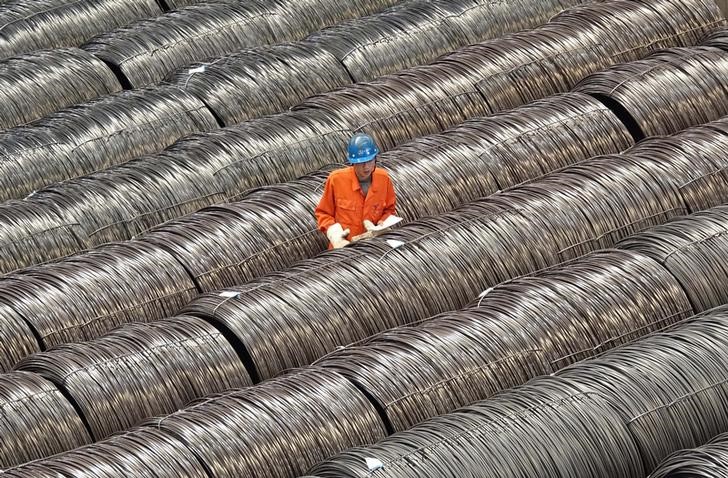 © Reuters. FILE PHOTO – A worker checks steel wires at a warehouse in Dalian, Liaoning province
© Reuters. FILE PHOTO – A worker checks steel wires at a warehouse in Dalian, Liaoning provinceBy Adam Jourdan
SHANGHAI (Reuters) – China unveiled plans on Friday to impose tariffs on up to $3 billion of U.S. imports in retaliation against U.S. tariffs on Chinese steel and aluminum products, as the world’s two largest economies stood on the brink of a trade war.
China was considering a 15 percent tariff on U.S. products including dried fruit, wine and steel pipes and a 25 percent tariff on pork products and recycled aluminum, the commerce ministry said in a statement on it website.
China has assembled a list of 128 U.S. products in total that could be targeted if the two countries are unable to reach an agreement on trade issues, the ministry added.
U.S. President Donald Trump signed a presidential memorandum on Thursday targeting up to $60 billion in Chinese goods with tariffs, but only after a 30-day consultation period that starts once a list is published.
Beijing’s disclosure of its planned retaliation to proposed tariffs on Chinese metal exports to the United States, served as a warning to Washington as both sides brandished their weapons while holding off from starting a full-blown trade war.
The commerce ministry said China would implement the measures in two stages: first the 15 percent tariff on 120 products including steel pipes and wine worth $977 million and later the higher 25 percent tariff on $1.99 billion of pork and aluminum.
“We intend to impose tariffs on certain U.S. imports to balance out the losses caused to Chinese interests by the U.S. tariffs on imported steel and aluminum,” the ministry said.
The ministry added it would take legal action under the framework of the World Trade Organization to maintain the stability of global trading rules. It added, however, it hoped it could resolve issues with the U.S. through dialogue.
Fusion Media or anyone involved with Fusion Media will not accept any liability for loss or damage as a result of reliance on the information including data, quotes, charts and buy/sell signals contained within this website. Please be fully informed regarding the risks and costs associated with trading the financial markets, it is one of the riskiest investment forms possible.
Source: Investing.com



























